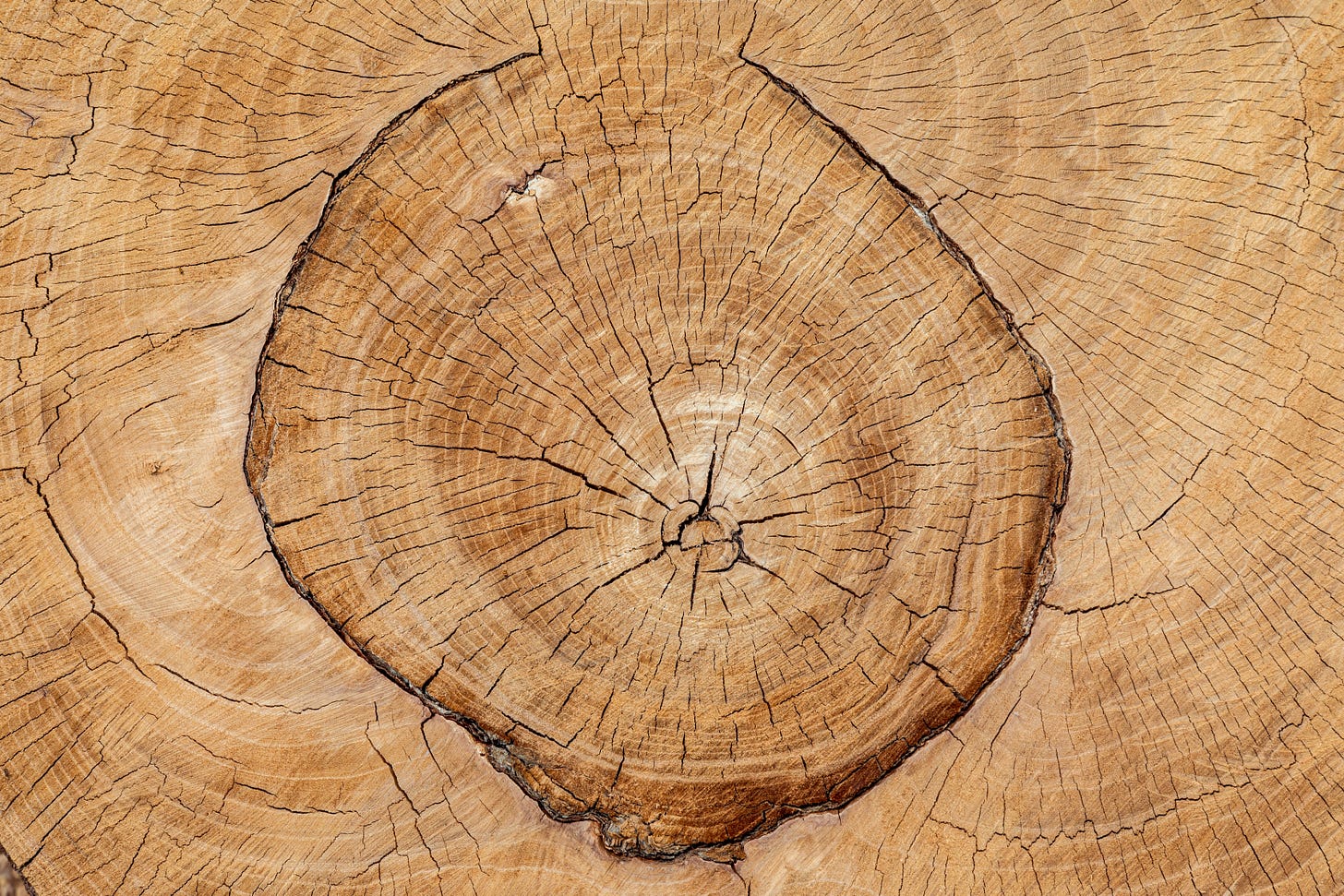what makes this Vrksasana (Tree Pose) more than just a pose? Conscious breath and focused thought can do so much to make this pose true yoga. I mean, the seaside vibes helped bring some calm, too:)
Back in September 2023 in a post on Ustrasana, I said I’d write a post on the koshas. Then in October 2023 I wrote a post on breath where I mention the koshas again, and then another post in October where I touch upon the koshas really briefly with the intention of revisiting the topic in detail later on. In that post, I bring up what I think is a seemingly simple, but very significant point:
“If you don’t know about the koshas, or know just a little bit, I just want to say that learning about them is not as simple as reading a few paragraphs defining and describing them. As you practice, over time you’ll have ‘aha moments’ about the koshas. They are meant to be experienced, and not just understood intellectually.”
So, whether you are brand new to this topic, or you’ve read about the koshas dozens of times, I bet that as you revisit the concept in this post (and then hopefully in your yoga practice) you’ll discover new things about these vital parts of us that make us human.
What are the koshas?
“I seek truth and beauty in the transparency of an autumn leaf, in the perfect form of a seashell on the beach, in the curve of a woman's back, in the texture of an ancient tree trunk, but also in the elusive forms of reality.”
-Isabel Allende
When was the last time your child threw a tantrum and you felt a familiar heat rising into your head as you got overwhelmed with their emotions? Or maybe your little one almost ran into a busy street and you felt your heart pounding as you just barely saved them? Of course, your children might be older now, but I bet you still have emotional responses to some of their choices and you feel those responses in your body.
Of course this all sounds so obvious. Of course it makes sense. But how much do we stop to think about how motherhood affects us on all levels, physically, mentally, emotionally, and spiritually? And even if we do reflect on this, how often do we know what to do to come back to center?
In the Upanishads, an ancient yogic text, we can read about the idea of the koshas, which are sometimes described as layers of our being, which help us classify different aspects of ourselves from gross to subtle. With that awareness, we can use simple methods of working with those koshas to stay more balanced in times of stress. The Sanskrit word kosha translates into sheath, layer, body, or container. In this article by Mike Sosteric, he explains that the koshas aren’t just layers or containers, but more like systems if we view this ancient concept in a more scientific light. I wonder if we could use the word ‘network’ or ‘complex’ to describe these layers of our being? For now, I’ll use the more traditional ‘sheath.’
Here is a very simple explanation of five koshas:
Annaymaya kosha (physical sheath): your physical body, sometimes called the food kosha since it’s formed from what we eat. It is the most gross, dense part of ourselves. (practice used to access this sheath: asana)
Pranamaya kosha (energetic sheath): what some might call the aura or your life force or energy. The breath is closely linked to this part of you and directly affects the state of your pranamaya kosha. This kosha controls your physiological processes like breathing, digestion, and circulation. (practice used to access this sheath: pranayama)
Manomaya kosha (mental sheath): your thoughts and emotions. This sheath has various aspects, like your senses, your awareness, ego, motor control, and your psychological state. (practices used to access this sheath: pratyahara, dharana, and dhyana)
Vijnanamaya kosha (wisdom sheath): your willpower, conscience, discernment, and intellect. (practices used to access this sheath: dhyana, yamas, and niyamas)
Anandamaya kosha (bliss sheath): your sense of connection to something bigger than you, something that links us all together as a whole. (practices used to access this sheath: seva, bhakti yoga, samadhi)
Koshas number two through five are progressively more subtle than the annaymaya kosha (physical sheath), but rather than neat, tidy layers that comprise us, these aspects (systems? networks?) intermingle and support each other. Revisit that moment when your child’s tantrum set off a cascade of emotions, sensations, and thoughts that tipped your nervous system into overdrive. See how one thought or feeling can go rippling through your body?
By the way, did you notice the little parenthetical parts at the end of each kosha’s description? Those are the eight limbs of yoga, which you might already be familiar with, but if you’re not, don’t worry! I’ll touch upon that within the next month:)
More than just layers of being (tangled yarn or mixed up play dough?)
The koshas are often described as the layers of an onion or matryoskha dolls, those Russian wooden dolls that nest inside one another. It seems like an oversimplification though, because if that were true, our physical layer would only be on the outside with no physical or physiological components beneath our flesh and bone.
So in honor of the playful outlook that motherhood often sparks in us when we connect with our little ones, I came up with a more complex image that I think describes the koshas as more integrated, like when you mix up the different colors of playdough or tangle a bunch of different colors of yarn. It might seem obvious that koshas aren’t just layers with rigid boundaries, but actually visualizing it creatively can be a reminder that we have intelligence and awareness in every part of our bodies, not just in our brains.
Do you have a creative way of picturing the koshas? Tell me about it! I always love to hear your point of view, too.
More than just poses
When we do yoga postures, we are not only positioning our bodies, we position our thoughts, too. The poses are important, for sure, but only as containers for what’s going on inside. So as we practice, we keep asking ourselves: what am I feeling? What sensations do I notice? What thoughts are swirling around? Each yoga pose is just a shell for that beautiful microcosm inside you.
Of course, even though I always say yoga is more than just poses, I don’t ever mean that other parts of yoga practice are better than the postures. Meditation and breathing practices are not more important than yoga poses. In the same way, one kosha is not more important than the other. We need them all and they work together to make the totality of who we are.
If you want a brief exploration into sensing the five koshas, here’s a little guided experiment in awareness (a.k.a. meditation but I thought the word experiment might sound more exciting and playful:).
I hope you found this helpful! Did you hear my kids in the background splashing in the bath? Maybe having that little noise could be good training for doing this again without the recording but with your little ones around:)
The koshas in the life of a yoga mama
We could talk all day about koshas, but we integrate that knowledge in a deeper way whenever we experience them. Here is an article from Yoga International on the koshas and at the end there is a little meditation on placing your awareness on each of the five koshas one at a time. Yoga Journal also has an article on the topic with some ways to tap into each kosha.
Sometimes the life of a yoga mama makes it hard to slow down and notice these subtle aspects of ourselves. So how can a yoga mama practice awareness of the koshas in the chaos of a busy day, when we are often paying attention to the koshas of our kids (ever thought of it that way? This has literally just occurred to me as I write:)?
The audio above brings us through all the koshas, but if you’d like to just play with one kosha at a time, it can be nice to have some mini-practices in your pocket, so to speak, so that you can bring some mindful pauses to your day. Here I’ll list the five koshas again and some ways to notice them while you’re doing the dozens of things you already do all day long:
Annaymaya kosha (physical sheath): pause just for a moment and notice the way your feet rest on the ground. Really notice and feel your feet; maybe even wiggle your toes to bring more attention there. If you’re sitting or lying down, notice the parts of you that touch the surface you’re on. Touch something with your hand and focus fully on that sensation of touching.
Pranamaya kosha (energetic sheath): exhale all the way and release as much of the air from your lungs as you can without straining. Then take in a slow, deep breath. Let your breath relax into its own natural rhythm and just follow it with your attention without trying to change it for a minute or so. Alternatively, you can sigh a few times. This is a good option if you’re feeling really stressed or frustrated.
Manomaya kosha (mental sheath): get out a journal and free write about a situation that is challenging or bothering you. Re-read it and imagine that you are a friend of yours; how would a friend respond or support yourself? Can you shift your view of yourself to how you think a friend would see you and possibly offer yourself more compassion?
Vijnanamaya kosha (wisdom sheath): Think of all the roles you embody (for instance, mom, partner/wife, daughter, sister, friend, your job, your racial/ethnic identity, your (non)religious identity, your hobbies and likes/dislikes). Ask yourself, “Who am I besides a mom, wife, (insert job), (insert race/ethnicity), etc…?” You can do this on paper or just do a mental inquiry as you sit quietly or go about your day. This is not a one-and-done activity! Motherhood is so fluid, you might find your perspective changing as your kids grow.
Anandamaya kosha (bliss sheath): we usually touch upon this kosha in a sort of indirect way, after we’ve been practicing for a while. It’s a feeling of lightness, ease, and joy no matter what is going on around you. When you touch it, it might be a little like falling in love (not a goal, no plan). My advice here? Practice no matter what. Finding bliss is a little bit like waiting for fruit to ripen.
What’s the point of all this, besides just gaining more awareness and appreciation of ourselves? Working with these different layers or sheaths helps us to function more fully and ultimately, to know our True Selves. That’s the key to finding your own voice, intuition, and power. What Yoga Mama doesn’t want that?
Journey to the Self
Back in 2018, when I first created this newsletter, I wrote a post on how my perspective on yoga had shifted once I became a mom. The post was about how I began letting go of the tendency to define myself by the things I could do (for instance, there are some more ‘advanced poses’ that I used to be able to do with ease that I haven’t even attempted in years).
As I went deeper into motherhood, I was moving more towards a practice of reminding myself who I am — my True Self or what some call the Supreme Self, Higher Self, my Soul. Who cares if I can nail that Hanumanasana (full splits) if I don’t feel emotionally balanced, physically stable, or at peace? The poses are just the physical part, at least on the surface.
The post was entitled From I CAN to I AM: my true Self. Once we learn about the koshas as a map to our Selves, we bring depth to our yoga practices. Yoga becomes more than just postures; it becomes the ultimate self-care and Self-care. The idea is that rather than always pushing ourselves to achieve, go deeper into poses, or practice on our yoga mats every single day, we can take a more holistic view. We don’t always have to be doing yoga because some aspects of yoga are more about just being in the moment. It’s that balance between being active and receptive.
Let’s tie this back to our seasonal theme of being open and receptive, which I wrote about a week ago. As we go from the more gross layer of ourselves to the more subtle ones, it becomes more about being receptive and observant.
I hope you try some of the explorations above! Until then, what’s one little thing you can do today to remind yourself that you are more than just a physical body? What’s one or two things you can do each day to remember and experience this?
Remember the photo of Vrksasana (Tree Pose) at the top of this post? One lovely way to explore koshas is to reflect on the name of a pose and what it represents. For example, when we’re in tree pose, we can wonder, “What do trees have to teach us about yoga?” Here is an intersection of a tree that I imagine as a reminder of the many layers of our ourselves and ourSelves.
For more inspiration on the finer qualities of Tree Pose, check out this poem by
Photo by Collab Media on Unsplash
Did you find some inspiration in this post? Let me know!
Know someone else who might enjoy this post? Share the love:)







The yarn visual is so unique! Love it 😊 also a great, succinct and practical overview of the koshas! Thanks for sharing. Can’t wait to see your overview of the 8 limbs!
I love the image of the koshas as infinitely interconnected— hard for the western mind to capture. Playdoh and yarn images are helpful. Thank you!